Undercover journalist infiltrated psychiatric hospital
A frightened and confused Nellie Bly is picked up by the New York police in 1887. She is brought before a judge, who has her examined by doctors. The experts are in complete agreement: the young woman is insane and belongs in an asylum. For now, everything is going according to Nellie's plan.
The clatter of typewriter keys—that's all Nellie Bly hears as she walks through the editorial office of the New York World newspaper on Thursday, September 22, 1887, and knocks on the editor-in-chief's door.
For months, the 23-year-old woman from Pittsburgh had been wandering the streets of New York looking for a job as a journalist, but so far she had been turned down every time. Writing articles for reputable newspapers was still reserved for men. However, when Bly entered John Cockerill's office, she quickly realized that this time she might have struck gold.
The editor-in-chief listens to Bly's ideas with interest, although he does not want to send her to Europe to cross the Atlantic in the lowest class so that Bly can describe the life of an emigrant to the US. However, Cockerill considers the adventurous young lady suitable for carrying out another idea that he has already discussed with the owner of the newspaper, the visionary Joseph Pulitzer: Bly must pretend to be insane and have herself admitted to the New York City Lunatic Asylum on Blackwell's Island, where many abuses are said to prevail. Bly must infiltrate an asylum “Write exactly what you see, good and bad, criticize when appropriate and praise when possible, and do not deviate from the truth,” says Cockerill from behind the brush mustache that completely covers his mouth.
“I'm actually a little concerned about your constant smile,” he adds. “I won't smile anymore,” Bly says immediately. She is overjoyed that she has finally landed a big assignment and realizes that she will have to use all her acting talent to succeed in getting behind the walls of the closed mental institution.
“You can try. If you succeed, you'll amaze everyone,” Cockerill says enthusiastically. He is already salivating at the thought of the sensational story the New York World can bring if all goes well. Nellie Bly has never shied away from a challenge. She knows that with the assignment on Blackwell's Island, she can make a name for herself in the newspaper world.
However, the young journalist also realizes that her life will be in danger once she makes the crossing to the notorious island and finds herself among the deranged women. She makes no secret of her concerns. “How will you get me out once I'm locked up there?” she asks the editor-in-chief. “I don't know,” he replies.
♦ Mission begins in a tavern
The very next afternoon, Nellie Bly walks through the windy streets of Manhattan in the shabbiest clothes she could find. She looks like a “poor, unhappy girl.” Before going out on the street, she spent hours practicing the vacant stare of a madwoman. As she trudges along the sidewalk of Second Avenue, Bly tries to think of ghost stories to make herself look frightened. She has never met a psychiatric patient. When she knocks on the door of a women's boarding house, she hopes to convince others that she has lost her mind. “Nellie Brown,” Bly introduces herself when an elderly lady opens the door. The matron of the women's boarding house, Mrs. Stanard, welcomes the journalist warmly. Over the course of the evening, the landlady notices that something is not quite right with the young Miss Brown.
“What's the matter with you? Are you worried about something or are you in trouble?” Mrs. Stanard asks.
Bly sees her chance. She says she is unstable and terrified of the other residents. She knows that mentally ill people are often afraid of strangers and tries to fool those around her. The journalist continues to act strangely throughout the evening, reacting oddly and looking at the other women with fear and confusion. When it is time for bed, the other residents of the women's hostel are concerned for their safety. “I don't really want to be here with such a disturbed woman in the house,” says one. Another thinks that Nellie will have murdered everyone before morning.
♦ Judge decides on Nellie Bly
That night, one of the guests wakes up after a nightmare in which Nellie Brown stabbed her with a knife. The next morning, Mrs. Stanard calls two police officers and takes them to Nellie's room. “If she doesn't come with us quietly, I'll drag her out by her hair,” says one of the officers as he leads Miss Brown out onto the street. The group is followed by neighborhood kids who jeer at the seemingly deranged woman. Mrs. Stanard also accompanies them to the courthouse, where she explains what happened to the judge. He must decide the young woman's fate according to the law. Bly continues to do her best to appear confused. She tells the judge that she is from Cuba. “Poor child. She looks well-groomed and speaks perfect English. I bet she's a decent girl,” says the judge, who clearly doesn't know what to do with this case. “Someone will have to take care of her,” he mutters.
One of the officers blurts something out. “Send her to the Island!” he shouts. “No, you definitely shouldn't do that. She's a decent lady, and she'll suffer there,” says Mrs. Stanard. Fortunately for Bly, the judge brings her one step closer to Blackwell's Island. He sends the confused young woman by ambulance to Bellevue Hospital in Manhattan.
There, the doctors must assess whether she is truly insane or not. “To the madhouse!”
♦ Doctors declare Bly insane
The muscleman grabs her arm—so hard that she “feels a jolt of pain through her body.” Then he leads her through the hospital corridors until they reach a pavilion where three fellow patients are awaiting their verdict. While Bly waits for a doctor to examine her, a nurse approaches her to ask if Miss Bly might have some small change in her pockets. “They'll take it from you anyway, dear child, so you might as well just give it to me,” the nurse whispers softly. But Nellie doesn't want to give her money to the strange woman. In the course of the afternoon, a doctor finally appears. He sits down quietly next to Bly, takes her pulse, and looks at her tongue. “What are you doing in New York?” he asks. “Nothing.” “Can you work?” “No, señor.” Bly replies in Spanish. “Are you a city woman? I mean, have you been treated by men?” “I don't know what you're talking about,” Bly says firmly. She feels like hitting the doctor over the head. The reporter has to answer one question after another, all of which she considers “superfluous and pointless.” Finally, the doctor stands up and informs the nurse of his opinion.
“Clearly insane. I see it as a hopeless case. She needs to go somewhere where she can be cared for,” says the doctor, with Nellie Bly sitting nearby. She immediately loses her faith in medicine. “I am convinced that no doctor can assess whether people are mentally ill,” she later writes.
The next day, Sunday, September 25, another doctor comes to examine her. He wants to know if Nellie ever hears voices at night. When she answers yes, he has made up his mind: this woman is insane, and it is only natural to send her to the asylum on Blackwell's Island. In just one weekend, Bly has managed to get herself admitted to the institution, which is closed to the public.
Around noon the next day, Bly and four other patients sail to the infamous island. The journalist is surprised that everything went so smoothly, and she feels a momentary rush of victory when she sets foot on the island. However, when a burly man grabs her arm roughly to take her to the ambulance carriage, she realizes she still has a long way to go. “What is this place?” Bly asks the man, continuing to play the role of a confused woman. “Blackwell's Island—a place for lunatics from which you will never escape,” he replies dryly.
Day 1: Plums and stale bread
The carriage jolts along the island's roads on this Monday, September 26, while Nellie Bly notices that the lawns on the way to the institution are neatly maintained. But when she glances at her fellow passengers in the carriage, she becomes saddened. Each and every one of them is facing an uncertain time behind bars. “Poor women with no prospect of liberation. Wouldn't it be much easier for them to go to the gallows instead of this tomb of living horrors?” Bly later wondered about the mentally ill she had seen.
As the carriage drives past the long stone buildings on the north side of the island, Nellie strikes up a conversation with Tillie Mayard, a young woman who looks healthy. But the doctors have spoken, and Tillie realizes that she and Bly have little chance of leaving the island. “Now that we're here, all we can do is wait until we find a way out. But that won't be easy, because the doctors won't listen to me or give me a chance to prove that I'm sane,” says the woman, who wonders what Bly is doing there.
“Insane? I don't see it in your face,” Tillie says before the new batch of patients is led from the carriage to the main building. When they are all inside, the large, heavy door closes behind them. When Bly is examined again at Blackwell's Island Insane Asylum, the diagnosis is upheld, even though she says she is not sick and does not want to stay there. The doctor doesn't even write that comment in the file and sends Bly to the living room, where the patients sit staring ahead on hard yellow benches. Apart from an out-of-tune piano, the room is empty.
“To the hall!” a voice commands a short time later, after which the patients trudge to the large, closed door of the dining room. The women wait in front of the door for fifteen minutes while a cold autumn wind blows through the open windows. They are blue with cold. “This is incredibly cruel,” Bly whispers to another newcomer, Anne Neville, before the patients shuffle into the dining room two by two. They have to sit on long benches without backrests.
Nellie Bly looks despairingly at the table in front of her, where five dried prunes lie on a plate and a bowl contains a ‘pink substance’ that is supposed to be tea. Next to the plate is a dried-out slice of bread and butter, but before Bly can sit down, a woman snatches the bread away. The prunes turn out to be so inedible that she gives them to someone else. Only the bowl of pink tea remains. After one sip, she also gives the watery drink to a fellow inmate. ‘You have to force yourself to eat, otherwise you'll get sick. In this environment, it can drive you insane. Your brain needs nourishment,’ warns Anne Neville.
♦ Patients get an ice-cold bath
On an empty stomach, she goes to the bathing room, where the women are told to undress. When Nellie hesitates and grumbles, a couple of nurses grab her and rip her clothes off, leaving her standing there in her underwear. “I'm not taking it off,” the journalist shouts, but before she has finished speaking, a nurse pulls her underwear off with a rough hand. Now she is completely naked, and the other patients are staring at her. To hide her nakedness, she quickly jumps into a bath of ice-cold water. An old, deranged woman is ordered to scrub her.
“Three buckets of ice-cold water were poured over my head, into my eyes, ears, nose, and mouth. I think I felt what someone who is drowning experiences. Then I was dragged out of the bath, gasping for breath and shivering from the cold. For a moment, I felt insane,” Bly wrote.
As cold water drips from her body, the nurses dress her in a gown bearing the inscription ‘Insane Asylum B.I.H. 6’.
This indicates that the patient belongs in Ward 6 of Blackwell's Island, where she is placed in a cell with cold, stone walls. Before the nurse, Miss Grupe, locks the door, Bly begs her for a nightgown. “You are now in a public institution, and you cannot expect to receive anything,” says Grupe with a heavy German accent. “But the city council pays to ensure that the staff take good care of the poor souls who end up here,” Bly calls out to the stern German woman. “You shouldn't expect kindness here, because you won't get it!” Grupe snaps at Nellie before slamming the door and leaving the journalist in the dark.
Day 2: Brushing keeps you warm
The next morning at 5:30 a.m., Bly is awakened. The nurse opens the window, allowing the cold wind to blow in the journalist's face. She has barely slept due to all the shouting. Bly can hardly tell the women waiting for breakfast apart. They are all wearing the same white suit. But eventually she finds Tillie Mayard, whom she recognizes by her short hair. “How did you sleep after that cold bath?” Nellie asks her new friend. “I was completely stiff from the cold, and the noise kept me awake. I was already tense before I came here, and I'm afraid I can't handle this pressure,” Tillie sighs before the two tired women shuffle into the dining room, where they are greeted with cold tea and a dollop of oatmeal porridge.
Bly tries to ask the nurses for more clothes, which would make the patients a little more comfortable in the unheated buildings. She only gets an angry look in response. Fortunately, the women get a little warmer when they are put to work with brooms and mops after breakfast. “It is not the staff who keep the institution clean for the patients, as I always thought, but the patients themselves who do everything. They even clean the nurses' bedrooms and wash their clothes,” Bly later writes.
The lawns outside are also maintained by the patients. They are only allowed outside for that reason and are not allowed to walk on the grass to play, exercise, or sunbathe. The daily walk is a torment for the sickest and most violent women, who are tied together with a rope. “The poor souls. This is so terrible that I cannot bear to look at it,” Anne Neville says to Nellie when the two see a group of tied-up patients during their walk.
The rest of the day, Bly and her fellow sufferers sit staring into space in the living room. Dinner breaks the monotony, but it is meager and does the women little good. “It pained me to see the patients at the table becoming increasingly ill. Miss Tillie Mayard became so nauseous after the first bite that she had to get up, and was then reprimanded for leaving the table. When the patients complain about the food, they are told to keep quiet,” writes Bly, who sees that the staff are well fed. Every hour is torture, and after dinner, the patients have to sit on the hard benches again until bedtime.
There are no books or anything else to pass the time. After 24 hours in the institution, Nellie is convinced that staying on Blackwell's Island does more harm than good to the mentally ill.
Days 3-9: Nurses torment patients
As the days pass, Bly becomes increasingly annoyed by the conditions in the institution. The cold robs the patients of all zest for life. “Almost every night I heard an elderly woman crying out in the cold and begging God to let her die,” Bly writes about the nights in the institution. Annoyed, she watches as Grupe and the other staff members—wearing their woolen underwear and padded coats—leave the old patient who complains that she is so cold to her fate.
“Oh, what are you doing to me? I'm so cold. Why can't I just lie in bed, or won't you give me a scarf?” the woman begs when the staff force her to sit upright on one of the hard wooden benches in the living room. Every time the old lady tries to lie down on the bench, the nurses rush over to pull her back up. Eventually, Miss Grupe even sits on the woman's lap and slides her cold hand under the patient's clothes, causing her to scream. Grupe and the others laugh maliciously, after which the German repeats the torture.
♦ The staff mistreats the patients every day and then laughs at them. Even gross violence is commonplace on the island.
One day, Bly watches in horror as the head nurse, Miss Grady, provokes an attack on a patient named Urena. “The doctors say you're 33, not 18,” Grady sneers, knowing that Urena can't stand it when someone says she's not so young anymore. Urena starts screaming and then bursts into tears. When she doesn't stop at the nurses' command, they beat her face and body. "This only made the poor child cry harder, so they strangled her. They simply tried to kill her.
They dragged her to the toilet, and I heard her screams fade to a muffled sigh. After a few hours, she returned to the living room, and you could clearly see the marks of their fingers on her neck," writes the reporter.
Bly repeatedly complains about the conduct of doctors and nurses, but the only result is that she is transferred to “The Lodge,” where the patients in the worst condition are kept. 'The worst place on the island. It's terribly dirty, and the stench is unbearable,' says Bly, who is regularly beaten. A few times, the nurses even jump on her, breaking two of her ribs. A young girl who is brought to The Lodge at the same time as Bly has an even harder time.
Nellie immediately sees that she is shivering with fever and that she will never get better in this filthy room swarming with rats. When the girl complains, she is taken to the laundry room. The nurses beat her, undress her, and put her under the ice-cold tap. The nurses then carelessly throw the young woman back into bed. She is soaking wet and shivering even more violently than before. 'The next morning, the girl was dead.
The doctors said she had died of cramps, and that was the end of it,“ writes Bly, who is beginning to tire of all the misery she is witnessing. ”I cursed doctors, nurses, and public institutions in my heart," says the journalist.
Day 10: Lawyer intervenes
On Wednesday, October 5, Nellie Bly is taking her daily walk when she is pulled out of line and told that a lawyer is waiting for her. The lawyer, hired by the New York World, has informed the asylum's management that friends of Nelly Brown have agreed to take care of the young woman, who was declared insane only 10 days earlier.
As agreed with editor-in-chief John Cockerill, Bly had used the surname Brown. With the help of a lawyer, the newspaper was able to get her out of the asylum.
A patient could only leave Blackwell's Island if a family member or acquaintance was willing to take her in. That is why the staff did not object when the lawyer arrived to pick up Bly.
“Goodbye, I'm going home,” are Nellie's last words to her new friends as she leaves them sad and with a guilty conscience in their captivity on this godforsaken island in the East River.
I walked past them on my way to freedom and life, while they faced a fate worse than death.
For 10 days, I had been one of them. It felt deeply selfish to leave them behind with their illnesses. I cherished a romantic desire to help them with sympathy and presence. But only for a moment. Then the bars disappeared and freedom felt sweeter than ever.
♦ Bly's articles cause a sensation
Although Nellie Bly cannot help the patients on Blackwell's Island by staying there, she tries to save them by writing about them.
On October 9, just four days after her return home, the first article about the insane asylum appeared in the New York World. Under the headline “Behind the Bars of the Asylum,” the journalist describes “the terror of cold baths and malicious nurses who torment and abuse patients,” as the introduction proclaims.
♦ "The facility on Blackwell's Island is a human rat trap.
It's easy to get in, but once you're there, you'll never get out," writes Bly, who recounts how careless doctors are when deciding what to do with a confused woman and how terribly patients are treated when they are locked up on the island.
The following Sunday, Nellie Bly's second article appears, and New Yorkers are lining up to read it. Even competing newspapers fill their columns with stories about the case.
Bly herself is catapulted to stardom as a reporter, and her name is on everyone's lips. This has never happened to a female journalist before.
“She has a great future ahead of her,” cheers Joseph Pulitzer, owner of the New York World.
He immediately offers her a permanent contract. Two months later, the newspaper magnate even asks the 23-year-old woman to write a book about her experiences in the asylum on Blackwell's Island.
At that point, however, thanks to the articles written by the young reporter, New York politicians are already in an uproar, and Bly travels to the island with an investigative committee, where people have since been fired and improvements have been made. “Since Miss Brown left, everything here has changed. The nurses are much nicer, and we have enough clothes. The doctors see us often, and the food has improved considerably,” says Anne Neville, who knows Bly only as her friend Nellie Brown.
As a journalist, however, Bly is skeptical and wonders whether her former fellow patient has been instructed by the institution's management to spin a good story, especially since she also encounters Tillie Mayard during her visit, who does not look like she is doing any better now. On the contrary, her condition has deteriorated significantly since Bly's departure.
Bly has to realize that not everyone on Blackwell's Island can be saved. But thanks to her, the chances of survival for psychiatric patients are now much greater.
♦ Postscript
Nellie Bly's undercover operation did not put an end to all abuses, but it was of great importance to mental health care in New York. In 1887, the city's institutions received an extra million dollars and new rules were introduced. The 10 days Bly spent in an asylum had not been in vain.

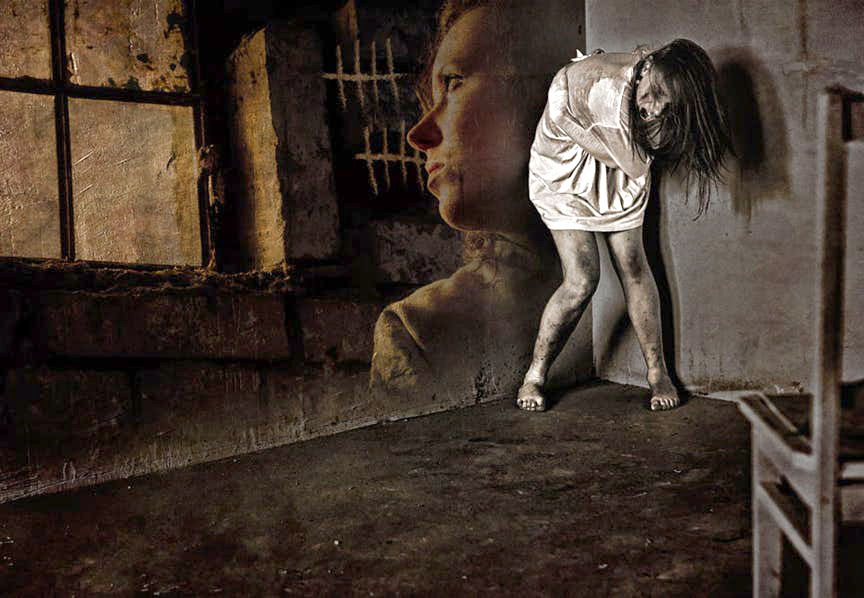
.jpg)

.jpg)
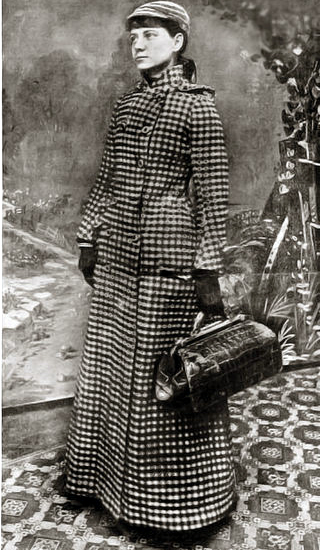

.jpg)
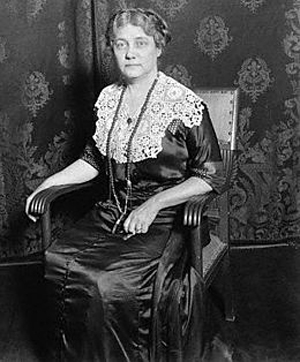
.jpg)

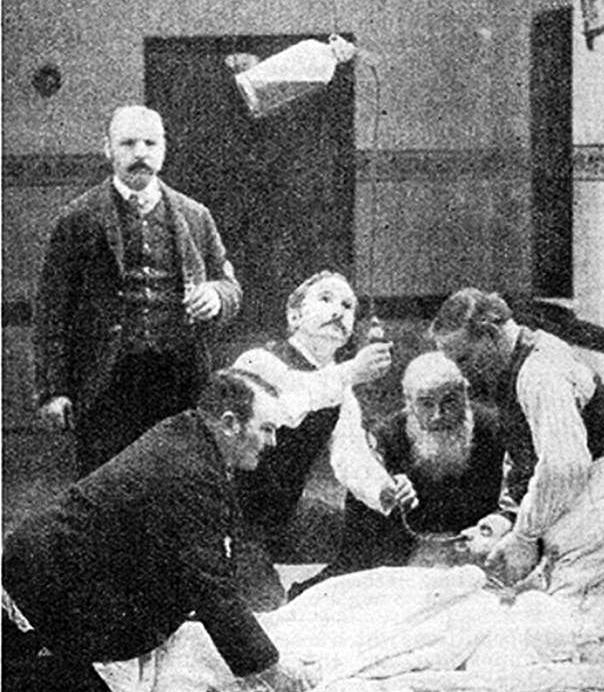
.jpg)
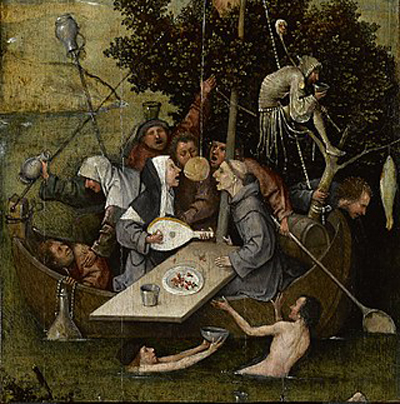
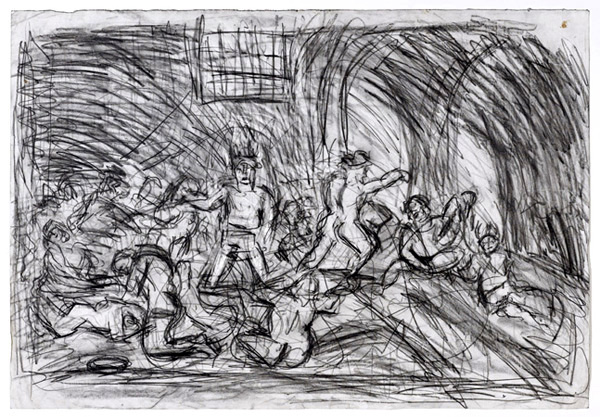
.jpg)
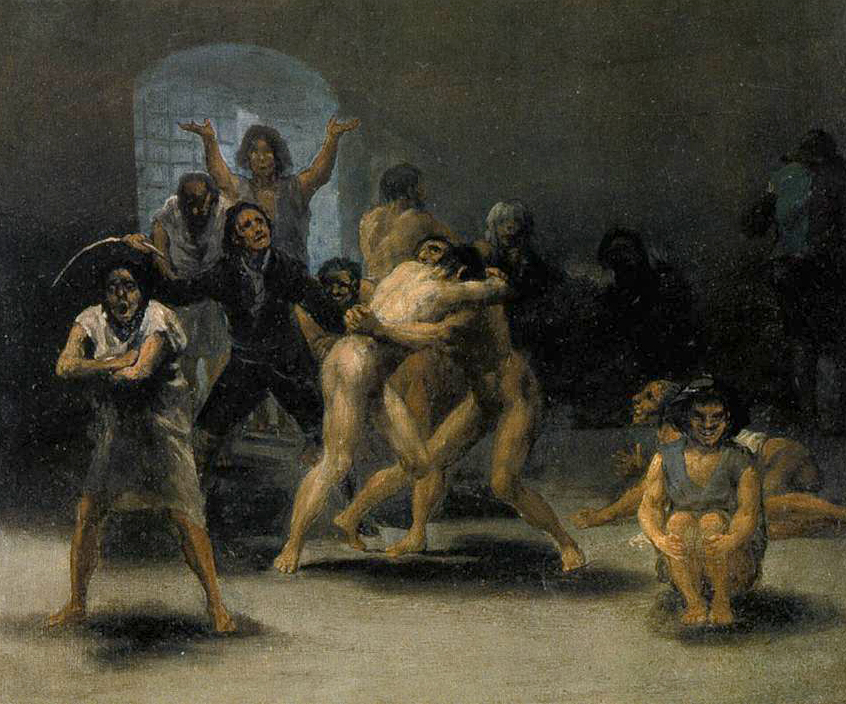
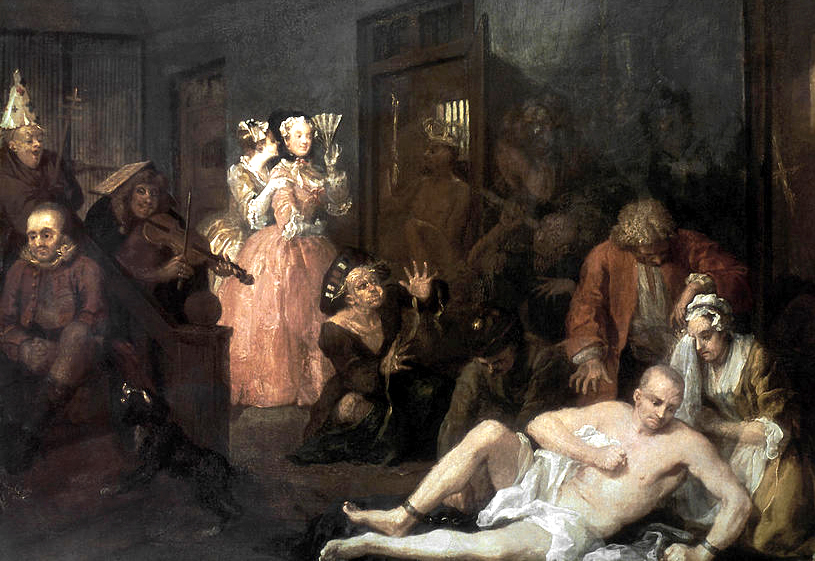
.jpg)

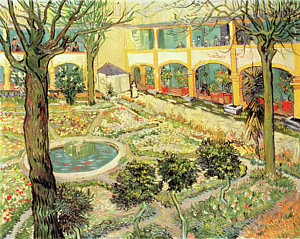
.jpg)
.jpg)
.png)

